| Jathedar of the Akal Takht | |
|---|---|
| ਜੱਥੇਦਾਰ ਅਕਾਲ ਤਖ਼ਤ ਸਾਹਿਬ | |
 | |
 | |
| Style | |
| Member of | Khalsa |
| Reports to | Sikhs |
| Residence | Akal Takht |
| Seat | Amritsar |
| Appointer | SGPC Sarbat Khalsa |
| Term length | No term limit; at the Khalsa's pleasure |
| Formation | 1606 |
| First holder | Bhai Gurdas as custodian of the Akal Takth |
| Website | Akal Takht Sahib |
The Jathedar of the Akal Takht (Punjabi: ਜੱਥੇਦਾਰ ਅਕਾਲ ਤਖ਼ਤ ਸਾਹਿਬ) is the head of the Akal Takht and head of the Sikhs worldwide.[3] The jathedar has the de facto power as the supreme spokesperson of the Khalsa to summon, trial and sentence any person who identifies as a Sikh from the Akal Takht.[4]
The current jathedar, Giani Raghbir Singh was appointed by the Shiromani Gurdwara Parbandhak Committee (SGPC) on 22 June 2023.[5] Jagtar Singh Hawara,[6][7] was declared jathedar of the Akal Takht by the Sarbat Khalsa on 10 November 2015 due to the imprisonment of Hawara, Dhian Singh Mand appointed by the Sarbat Khalsa has been serving as the acting jathedar.[8] The jathedars of the five takhts generally make important decisions in consultation within the framework of the Sikh Rehat Maryada while considering the collective will of the Sikhs.[9]
The position of jathedar is not established by any constitutional document, but exists only by long-established convention, whereby a Sarbat Khalsa or an institution authorised by it appoints a person most likely to command the confidence of the Sikhs.[10] The jathedar is supported by the Shiromani Gurdwara Parbandhak Committee and heads the other four jathedars of the takhts.[11] The jathedar also commands the Akali Nihangs, an armed Sikh warrior order started from the Akal Takht by the sixth Sikh Guru, Guru Hargobind.[12]
The Akal Takht is the building directly opposite the Darbar Sahib founded by Guru Hargobind, as a symbol of political sovereignty and where spiritual and temporal concerns of the Sikh people can be addressed.[13] Along with Baba Buddha and Bhai Gurdas, the sixth Guru built a concrete slab. When Guru Hargobind revealed the platform on 15 June 1606, he put on two swords: one indicated his spiritual authority (piri) and the other, his temporal authority (miri).[14]
History and development[edit]
Title and etymology[edit]
The word jathedar is a compound of ਜੱਥਾ, jathā, 'troop' and ਦਾਰ, dār, 'keeper of', meaning leader of a troop or group as a collective.[15] The title is used for a general or commander of a Sikh military unit and applies to a head of a takht.[16]
Origin[edit]
After the execution of the fifth Guru, Guru Arjan, his son and successor Guru Hargobind bearing the two swords of ਮੀਰੀ, mīrī, 'politics' and ਪੀਰੀ, pīrī, 'spirituality' declared himself sovereign and defied the imperial edict of the Mugal Empire in 1606.[17] Recognising the necessity of coordinating efforts against the Mughal empire, the Guru simultaneously began the process of militarising the Sikhs.[18] The first hukamnama issued from the Akal Takht on 30 June 1606 commanded the Sikhs to offer arms and horses.[19] The position of jathedar was established, when the Guru appointed Bhai Gurdas as the first custodian of the Akal Takht, which was then known as the Akal Bunga.[20] However, Guru Hargobind had to leave the Akal Takht in 1634 due to the hostilities of the Mughal rulers, and the institution came under the control of the Minas, followers of Prithi Chand, the excommunicated brother Guru Arjan.[21]
Following the establishment of the Khalsa, which took effect on 13 April 1699, the tenth Guru, Guru Gobind Singh sent Bhai Mani Singh to Amritsar with instructions to take possession of the Darbar Sahib and the Akal Takht from the Minas.[22] The Sikhs assigned Bhai Mani Singh as the head granthi of Harmandir Sahib and the jathedar of the Akal Takht. After the passing of Guru Gobind Singh, the Sikh divisions accepted the common leadership and sovereignty of the head of the Akal Takht.[23]
Sarbat Khalsa[edit]

In 1733, Zakariya Khan Bahadur attempted to negotiate truce with the Sikhs by offering them a jagir, the title Nawab to their head, and unimpeded access to Amritsar. After discussion at a Sarbat Khalsa, Nawab Kapur Singh Virk was chosen head of the Sikhs and took the title of Nawab.[24] He organised the various Sikh militias into two groups; Taruna Dal for under 40 years of age and the Buddha Dal for over 40 years of age, which would collectively be known as Dal Khalsa.[25] Considering Hari ke Pattan, where the Sutlej and Beas rivers meet as a reference point, the Taruna Dal was assigned to control the eastern area while the Buddha Dal controlled the west.[26]
On 23 March 1748, a Sarbat Khalsa appointed Jassa Singh Ahluwalia to take the command of Dal Khalsa and become the head of the Sikhs.[27] Ahluwalia proclaimed the title of Sultan-ul-Qaum (Authority of the Nation) when the Sikhs under his leadership defeated the Afghan forces of Ahmad Shah Abdali and took Lahore without resistance in September 1761.[28] The 40,000 allied forces of Sardar Baghel Singh, Jathedar Jassa Singh Ahluwalia and Sardar Jassa Singh Ramgarhia conquered the Red Fort in Delhi and hoisted the Nishan Sahib atop on 11 March 1783. The condition of their retreat included the construction of seven gurdwaras marking Sikh historical sites in Delhi.[29]
After the demise of Jathedar Ahluwalia in 1783, Amritsar ceased to function as the centre for Sikhs. In 1800, Akali Phula Singh intervened, recognising the deteriorating situation of Amritsar's gurdwaras.[30] Under his leadership, he swiftly addressed mismanagement and initiated essential renovations.[31] Revered for his integrity, dedication and strong leadership, Phula Singh was unanimously inaugurated by the Sarbat Khalsa, as the jathedar of the Akal Takht. During his tenure, the position of jathedar of the Akal Takht held sovereign authority within the Sikh state under the governance Maharaja Ranjit Singh. [32] State currency received the formal approval of the Akal Takht before circulation.[33]
From the highest echelons of power to the ordinary citizens, all were accountable to Jathedar Phula Singh.[34] This authority was demonstrated in the public trial and sentencing of Maharaja Ranjit Singh at the Akal Takht for his marriage to Moran Sarkar, a Muslim nautch girl.[35] Following the martyrdom of Jathedar Phula Singh and the demise of Maharaja Ranjit Singh, the Sikh state experienced a period of internal instability due to deceitful leaders.[36] Exploiting the internal vulnerability of the Sikhs, the British and their protected princely states launched military campaigns against Sikhs.[37] Jathedar Hanuman Singh, who succeeded Jathedar Akali Phula Singh met his end at the Battle of Sohana in Mohali, succumbing to injuries. Subsequently, his successor, Jathedar Praladh Singh, was exiled to Hazur Sahib in Nanded.[38]
Dispute[edit]
A Sarbat Khalsa convened by Sikh organisations opposed to the influence of Shiromani Akali Dal over Sikh religious institutions in 2015 appointed Jagtar Singh Hawara as the Jathedar of Akal Takht. The SGPC president at that time, Avtar Singh Makkar, however condemned the convening as against the principles of Sikhism and it's decisions null and void. He added that the removal of Jathedars came under Sikh Gurdwaras Act, 1925 and no one could challenge the authority of the SGPC.[1] Giani Gurbachan Singh continued to remain in his post until his resignation on 18 October 2018. On 23 October, the SGPC appointed Giani Harpreet Singh as the acting jathedar of Akal Takht.[39]
Qualifications and selection[edit]

The jathedar serves at the Khalsa’s pleasure, meaning the post does not have a fixed term, and once appointed, the jathedar remains in service until they resign, are dismissed, or die.
Chapter IV, Article V of the Sikh Rehat Maryada only permits an initiated Sikh to enter the hallowed enclosures of a takht; therefore, only a Khalsa Sikh of high regard can become a jathedar.[40] Prior to 1921, jathedars were appointed by the Sarbat Khalsa, a biannual deliberative assembly of the Sikhs held at Amritsar.[41] Since 1921, the jathedar of takhts have generally been appointed by the Shiromani Gurdwara Parbandhak Committee.[42]
Role and authority[edit]
Chapter XIII, Article XXVII of the Sikh Rehat Maryada allows for an appeal against a local decision concerning the Sikhs to be made to the Akal Takht.[40] The jathedar of the Akal Takht has the de facto power to summoned Sikhs including those who hold a position of authority to be trialed.[43] Hukamnamas issued by the jathedar from the Akal Takht which are binding may order an acquittal, penalty or excommunication.[44] The Khalsa can hold individuals accountable for violating the decisions of the Akal Takht.[45]
List[edit]
- Colour key
Guru Sarbat Khalsa Buddha Dal SGPC
| No. | Portrait | Name (Birth–Death) |
Term | Assigned by | Ref. | |||
|---|---|---|---|---|---|---|---|---|
| 1 | 
|
Gurdas Bhalla (1551–1637) |
1606 | 1637[ੴ] | 31 years | Guru Hargobind | [46] | |
| Usurped by Minas from 1640 to 1698 | ||||||||
| 2 | 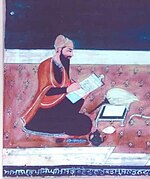
|
Mani Singh (1644–1737) |
1699 | 1737[ੴ] | 38 years | Guru Gobind Singh | [47] | |
| 3 | 
|
Darbara Singh (1644–1734) |
1722 | 1734 | 12 years | Sarbat Khalsa | [48] | |
| 4 | 
|
Kapur Singh Virk (1697–1753) |
1733 | 29 March 1748 |
15 years | Sarbat Khalsa | [49] | |
| 5 | 
|
Jassa Singh Ahluwalia (1718–1783) |
29 March 1748 |
23 October 1783[ੴ] |
35 years, 208 days | Sarbat Khalsa | [47] | |
| 6 | 
|
Phula Singh (1761–1823) |
1800 | 1823[ੴ] | 23 years | Sarbat Khalsa | [50] | |
| 7 | 
|
Hanuman Singh (1755–1846) |
1823 | 1846[ੴ] | 23 years | Buddha Dal | [48] | |
| 8 | 
|
Prahlad Singh (death 1865) |
1846 | 1865[ੴ] | 19 years | Buddha Dal | [48] | |
| Usurped by Sarbarahs appointed by the British Indian Government from 1849 to 1920 | ||||||||
| 9 | 
|
Teja Singh Bhuchar |
12 October 1920 |
1921 | 1 year | Sarbat Khalsa | [51] | |
| 10 1 of 2 |

|
Teja Singh Akarpuri (1892-1975) |
29 April 1921 |
13 October 1923 |
2 years, 167 days | SGPC | [52] | |
| 11 1 of 2 |
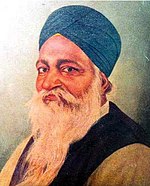
|
Udham Singh Nagoke (1894-1966) |
1923 | 1924 | 1 year | SGPC | [48] | |
| 12 1 of 2 |

|
Acchar Singh (1893-1976) |
09 February 1924 |
10 January 1926 |
1 year, 335 days | SGPC | [53] | |
| — 2 of 2 |

|
Udham Singh Nagoke (1894-1966) |
10 January 1926 |
short period | Less than a year | SGPC | [53] | |
| — 2 of 2 |

|
Teja Singh Akarpuri (1892-1975) |
27 November 1926 |
21 January 1930 |
3 years, 55 days | SGPC | [52] | |
| 13 | 
|
Didar Singh |
1925 | short period | Less than a year | SGPC | [48] | |
| 14 | 
|
Jawaher Singh Mattu Bhaike |
1926 | short period | Less than a year | SGPC | [48] | |
| 15 | 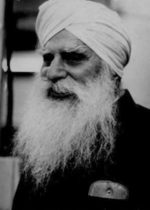
|
Gurmukh Singh Musafir (1899-1976) |
1931 | 1934 | 3 years | SGPC | [48] | |
| 16 | 
|
Vaisakha Singh Dadehar (1877-1957) |
October 1934 |
December 1934 |
61 days | SGPC | ||
| 17 | 
|
Mohan Singh Nagoke (1898-1969) |
1935 | 1952 | 17 years | SGPC | [48] | |
| 18 1 of 2 |
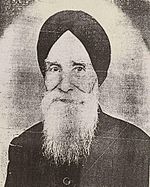
|
Partap Singh (1904-1984) (Acting) |
1938 | 1948 | 10 years | SGPC | [54] | |
| — 2 of 2 |

|
Partap Singh (1904-1984) |
1952 | 1954 | 2 years | SGPC | [54] | |
| — 2 of 2 |

|
Acchar Singh (1893-1976) |
23 May 1955 |
08 November 1962 |
7 years, 169 days | SGPC | [53] | |
| 19 | 
|
Mohan Singh Tur (1916-1979) |
1962 | 1963 | 1 year | SGPC | [48] | |
| 20 | 
|
Sadhu Singh Bhaura (1905-1984) |
1964 | 1980 | 16 years | SGPC | [48] | |
| 21 1 of 2 |

|
Kirpal Singh (1918-1993) (Acting) |
1963 | 1965 | 2 years | SGPC | [55] | |
| 22 | 
|
Gurdial Singh Ajnoha (1927-1982) |
2 March 1980 |
1982[ੴ] | 2 years | SGPC | [48] | |
| — 2 of 2 |

|
Kirpal Singh (1918-1993) |
1983 | 26 July 1986 |
3 years | SGPC | [55] | |
| 23 | 
|
Jasbir Singh Rode |
26 January 1986 |
28 May 1988 | 3 years | Sarbat Khalsa | [56] | |
| 24 | 
|
Gurdev Singh Kaunke (1949-1993) (Acting) |
26 January 1986 |
1 January 1993[ੴ] |
7 years | Sarbat Khalsa | [48] | |
| 25 | Gurbachan Singh Manochahal (1954-1993) (Acting) |
27 April 1986 |
26 January 1987 |
274 days | Sarbat Khalsa | [57] | ||
| 26 1 of 2 |

|
Darshan Singh (born 1940) (Acting) |
31 December 1986 |
9 March 1988 |
1 year, 69 days | SGPC | [58] | |
| — 2 of 2 |

|
Darshan Singh (born 1940) |
1989 | 1990 | 1 year | SGPC | [48] | |
| 27 | 
|
Manjit Singh (Acting) |
1994 | 1997 | 3 years | SGPC | [48] | |
| 28 | 
|
Ranjit Singh (born 1955) |
1994 | March 1999 |
5 years | SGPC | [48] | |
| 29 1 of 2 |

|
Puran Singh (death 2019) (Acting) |
10 February 1999 |
April 1999 |
50 days | SGPC | [59] | |
| — 2 of 2 |

|
Puran Singh (death 2019) |
April 1999 |
28 March 2000 |
362 days | SGPC | [59] | |
| 30 | 
|
Joginder Singh Vedanti (death 2021) |
28 March 2000 |
2008 | 8 years | SGPC | [60] | |
| 31 | 
|
Gurbachan Singh (born 1948) |
06 August 2008 |
18 October 2018 |
10 years, 73 days | SGPC | [61] | |
| 32 | 
|
Jagtar Singh Hawara (born 1973) |
10 November 2015 |
Incumbent | 8 years, 248 days | Sarbat Khalsa | [62] | |
| 33 | 
|
Dhian Singh Mand (born 1961) (Acting) |
10 November 2015 |
Incumbent | 8 years, 248 days | Sarbat Khalsa | [63] | |
| 34 | 
|
Harpreet Singh
(Acting) |
22 October 2018 |
16 June 2023 |
4 years, 238 days | SGPC | [64] | |
| 35 | 
|
Raghbir Singh (born 1970) |
22 June 2023 |
Incumbent | 1 year, 29 days | SGPC | [2] | |
- ^ੴ Died during term
Timeline of jathedars[edit]
The following timeline depicts the progression of the jathedars.
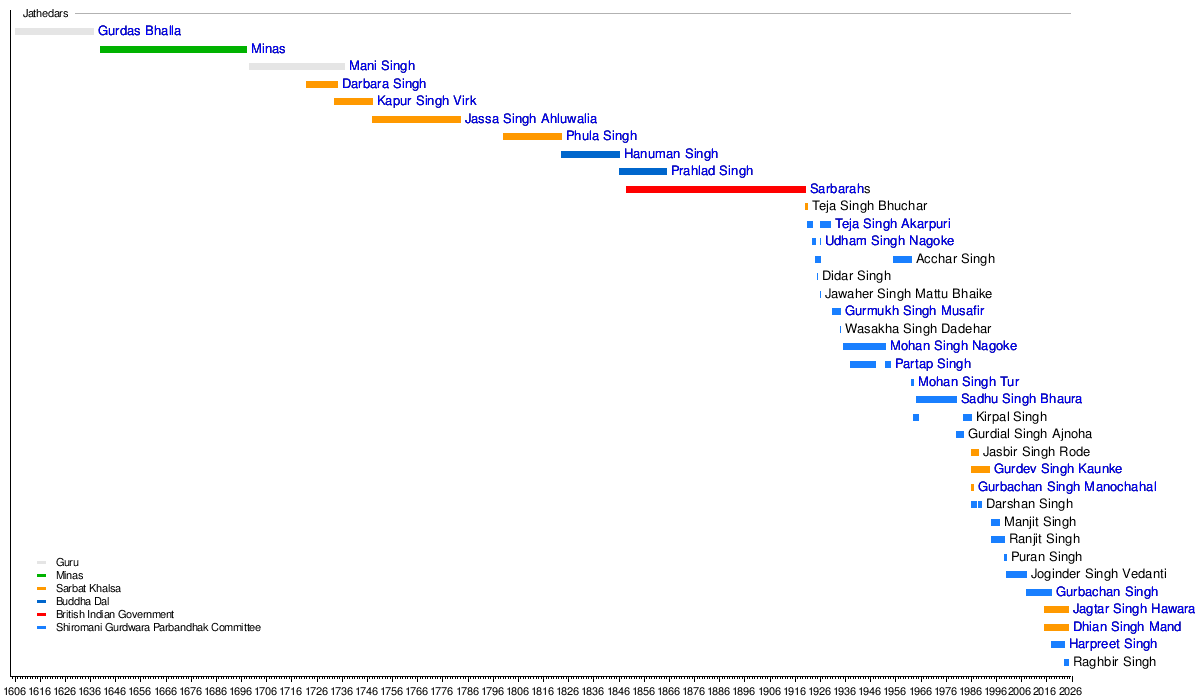
Notes[edit]
- ^ The SGPC refused to recognize the authority of the 2015 Sarbat Khalsa.[1] Raghbir Singh has served as the jathedar of SGPC since 2023.[2]
- ^ Jagtar Singh Hawara was appointed by the Sarbat Khalsa on 10 November 2015. However due to his imprisonment, Dhian Singh Mand was appointed as the acting jathedar in his stead. The SGPC however refused to recognize its decisions.[1]
References[edit]
- ^ a b c At Sarbat Khalsa, hardliners appoint Hawara Akal Takht Jathedar
- ^ a b Barua, Annesha (16 June 2023). "Giani Raghbir Singh appointed as Jathedar of Shri Akal Takht Sahib: A dedicated journey of service". PTC News. Retrieved 16 June 2023.
- ^ Randhir, G. S. (February 1990). Sikh Shrines in India. New Delhi: Publications Division Ministry of Information & Broadcasting. ISBN 978-81-230-2260-4. Retrieved 10 November 2022.
- ^ Brar, Kamaldeep Singh (6 October 2017). "Akal Takht excommunicates Sucha Singh Langah without a hearing". The Indian Express. Retrieved 10 November 2022.
- ^ ਰੰਧਾਵਾ, ਮਨਵੀਰ (16 June 2023). "ਰਘਬੀਰ ਸਿੰਘ ਨੂੰ ਐਲਾਨਿਆ ਗਿਆ ਸ੍ਰੀ ਅਕਾਲ ਤਖ਼ਤ ਸਾਹਿਬ ਦਾ ਨਵਾਂ ਜਥੇਦਾਰ". Pro Punjab Tv (in Punjabi). Pro Punjab TV. Retrieved 16 June 2023.
- ^ "The Tribune, Chandigarh, India - Main News". Retrieved 1 April 2015.
- ^ "Sarbat Khalsa appoints Jagtar Singh Hawara as Akal Takht jathedar". Hindustan Times. 2015-11-10. Retrieved 2023-05-11.
- ^ Paul, GS (8 November 2018). "Takht Jathedar's address marred by sloganeering". The Tribune. Retrieved 10 November 2022.
- ^ Sethi, Chitleen (8 December 2022). "Ex-jathedar a 'sinner', dope tests for staff: Akal Takht head's orders spark sit-in at Patna Sahib". The Print. Archived from the original on 8 December 2022. Retrieved 8 December 2022.
- ^ Gill, Kamaljit (1983). "Role of the vernacular press during the Gurdwara Reform Movement". Proceedings of the Indian History Congress. 44: 463–470. ISSN 2249-1937. JSTOR 44139886. Retrieved 12 December 2022.
- ^ Ahluwalia, Jasbir Singh (2003). Liberating Sikhism from 'the Sikhs': Sikhisim's [sic] Potential for World Civilization. Chandigarh: Unistar Books. p. 14.
- ^ Brard, Gurnam (2007). East of Indus: My Memories of Old Punjab. Hemkunt Press. p. 185. ISBN 9788170103608.
- ^ Fahlbusch E. (ed.) "The encyclopedia of Christianity." Archived 7 May 2014 at the Wayback Machine Eerdmans, Grand Rapids, Michigan, 2008. ISBN 978-0-8028-2417-2
- ^ Singh, Dr Kuldip. Akal Takht Ate Khalsa Panth. Chandigarh. p. 2. Archived from the original on 21 October 2016. Retrieved 21 October 2016.
- ^ Singh, Harbans. The Encyclopedia of Sikhism. Vol. 2: E-L. Punjabi University, Patiala. pp. 362–3.
- ^ Hawley, John Stratton; Mann, Gurinder Singh (1 January 1993). Studying the Sikhs: Issues for North America. New York: State University of New York Press. p. 178. ISBN 978-0-7914-1425-5. Retrieved 24 December 2022.
- ^ Dilgeer, Harjinder Singh (1980). The Akal Takht. Jalandhar: Sikh University Press.
- ^ Puri, Sunita (1993). Advent of Sikh Religion: A Socio-political Perspective. Munshiram Manoharlal Pub. p. 219. ISBN 978-81-215-0572-7. Retrieved 24 December 2022.
- ^ Singh, Surinderpal. "Celebrating the foundation day of Akal Takht Sahib (Akal Bunga)". Sikhri. Retrieved 29 May 2020.
- ^ Singh, Jarnail (1986). Sikh Symposium 1985. Sikh Social and Educational Society. p. 23. ISBN 978-0-8364-1840-8. Retrieved 10 November 2022.
- ^ Abstracts of Sikh Studies Volume 9. Institute of Sikh Studies. 2007. p. 32. Retrieved 24 December 2022.
- ^ Dhanoa, Surain Singh (2005). Raj Karega Khalsa. New Delhi: Sanbun Publishers. p. 146. Retrieved 24 December 2022.
- ^ Chauhan, G.S. (2005). The Gospel Of The Sikh Gurus. New Delhi: Hemkunt Publishers. p. xiv. ISBN 81-7010-353-3.
- ^ Gandhi, Surjit Singh (1980). Struggle of the Sikhs for Sovereignty. Guru Das Kapur. p. 335.
- ^ Singha, H. S. (2005). Sikh Studies, Book 6. Hemkunt Press. p. 37. ISBN 8170102588.
- ^ Singha, H. S (2000). The encyclopedia of Sikhism (over 1000 entries). Hemkunt Press. pp. 39–. ISBN 978-81-7010-301-1. Retrieved 16 July 2010.
- ^ Singh, Sewa (1984). Baba Jassa Singh Ahluwalia (1718-1783). Chandigarh: Punjab State Archives Department. p. 2. Retrieved 12 December 2022.
- ^ Mehta, J. L. (2005). Advanced study in the history of modern India 1707–1813. Sterling Publishers Pvt. Ltd. p. 303. ISBN 978-1-932705-54-6. Retrieved 2010-09-23.
- ^ Murphy, Anne (29 November 2012). The Materiality of the Past: History and Representation in Sikh Tradition. OUP USA. ISBN 978-0-19-991629-0.
- ^ Kaile, Saroop Lal; Gill, Harnek (2009). Panth Hitaishi Akali Phula Singh (First ed.). Amritsar: Chattar Singh Jeevan Singh. p. 43. ISBN 978-81-7601-985-9.
- ^ Singh, Jagjit (1998). Temple of Spirituality or Golden Temple of Amritsar. New Delhi: Mittal Publications. p. 72.
- ^ Singh, Prem (1926). Baba Phoola Singh Ji 'Akali' (4th ed.). Ludhiana: Lahore Book Shop. p. 84. ISBN 81-7647-110-0.
- ^ Khera, Paramdip Kaur (2011). Catalogue of the Sikh Coins in the British Museum. London: British Museum Press. ISBN 978-086159-190-9. Retrieved 14 July 2024.
- ^ Chhabra, G. S. (2005). Advance Study in the History of Modern India (Volume-2: 1803-1920) (Fifth ed.). New Delhi: Lotus Press. p. 126. ISBN 81-89093-07-X.
- ^ Singh, Kartar (1975). Stories from Sikh History:Book VII. New Delhi: Hemkunt Press. p. 160.
- ^ Khushwant Singh, A History of the Sikhs (1839–1974), Vol. II, p. 62.
- ^ "nihangsingh.org". Archived from the original on 11 March 2014. Retrieved 11 March 2014.
- ^ ARIHANT, EXPERTS (2018). KNOW YOUR STATE PUNJAB. [S.l.]: ARIHANT PUBLISHERS. p. 189. ISBN 978-93-131-6766-2. OCLC 1264717219.
- ^ Surjit Singh (23 October 2018). "Giani Harpreet Singh is Akal Takht acting jathedar". Hindustan Times. Retrieved 4 February 2023.
- ^ a b The Code of Conduct and Conventions. Amritsar: Shiromani Gurdwara Parbandhak Committee. Retrieved 8 December 2022.
- ^ Romana, Karamjit Kaur (2018). Role of Akal Takht in Sikh history (PDF). Talwandi Sabo: Guru Kashi University Talwandi Sabo. Retrieved 8 December 2022.
- ^ McLeod, W. H. (1999). "Discord in the Sikh Panth". Journal of the American Oriental Society. 119 (3). American Oriental Society: 381–389. doi:10.2307/605931. JSTOR 605931. Retrieved 10 December 2022.
- ^ Tiwana, Jagpal Singh (2010). The Sikh Review Volume 58, Issues 673-678. Sikh Cultural Centre. pp. 34–35.
- ^ Singh, Teja (15 December 1922). The Gurdwara Reform Movement And The Sikh Awakening. Lahore: Ruchi Ram Sahni. p. iv. Retrieved 10 December 2022.
- ^ Gulashan, Gurbakhsh Singh (2015). Understanding Sikh Rehat Maryada. Essex, UK: Khalsa Pracharak Jatha. p. 311. ISBN 9780957585911. Retrieved 24 December 2022.
- ^ Jaggi, Dr. Rattan Singh (1974). Bhai Gurdas. Patiala: Punjabi University Patiala. p. 19. Retrieved 10 December 2022.
- ^ a b Singh, Sukhdayal (1991). Siri Akal Takhat Sahib Sarbat Khalsa Ate Gurmatta. Punjab University, Patiala. pp. 3–9. Retrieved 24 October 2016.
- ^ a b c d e f g h i j k l m n o Singh, Balkar (1995). Akal Takht Sahib Jot Te Jugat. Amritsar: Shiromani Gurdwara Parbandhak Committee. pp. 203–204. Retrieved 10 December 2022.
- ^ Herrli, Hans (2004). The coins of the Sikhs (PDF) (2nd rev. and augmented ed.). New Delhi: Munshiram Manoharlal Publishers. p. 9. ISBN 81-215-1132-1. Retrieved 14 July 2024.
- ^ Singh, Dr. H.B (January 1988). Ankhila Jarnail Akali Phula Singh. Delhi: Awat Singh. p. 15. Retrieved 10 December 2022.
- ^ Singh, Giani Partap (1976). Akali Lehar De Mahan Neta. Amritsar: Bhai Jawahar Singh Kripal Singh and Company. p. 110. Retrieved 10 December 2022.
- ^ a b Mikhayhu, Alain (2011). Teja Singh Akarpuri. Tempor. ISBN 9786138779568.
- ^ a b c Bharti, Mahinder Singh (3 August 1997). Sankep Jeevani Singh Sahib Jathedar Aachar Singh Ji. Bhai Chatar Singh Jiwan Singh. p. 6.
- ^ a b Nirankari, Dr Maan Singh (1900s). Giani Partap Singh Ji. Darbar Printing Press. p. 17.
- ^ a b "Kirpal Singh, Singh Sahib Giani". The Sikh Encyclopedia. Archived from the original on 25 October 2016. Retrieved 25 October 2016.
- ^ Fenech, Louis; Singh, Pashaura (24 March 2014). The Oxford Handbook of Sikh Studies. London: Oxford University Press. ISBN 9780191004124.
- ^ Walia, Varinder. "'Misdeeds' of stalwarts during militancy Amritsar ex-DC reveals it all". The Tribune. Retrieved 6 November 2016.
- ^ Chima, Jusdep Singh (2010). The Sikh Separatist Insurgency in India. New Delhi: SAGE Publications India Pvt Ltd. p. 141. ISBN 9788132103028.
- ^ a b Walia, Varinder (28 March 2000). "Giani Puran Singh sacked 4 SGPC members excommunicated". The Tribune. Retrieved 10 December 2022.
- ^ Menon, Aditya (17 May 2021). "From Dera to RSS, JS Vedanti Took on Many to Protect Akal Takht". The Quint. Retrieved 10 December 2022.
- ^ Why a road-safety rule has upset some Sikhs
- ^ Deep, Ajay. "Jagtar Singh Hawara is the new Akal Takht Jathedar via Sarbat Khalsa". Retrieved 21 October 2016.
- ^ "Parallel Jathedar Mand's bid to give sandesh at Golden Temple foiled". 2017-10-20.
- ^ "Giani Harpreet Singh is acting jathedar of Akal Takht". The Times of India. Retrieved 23 October 2018.
